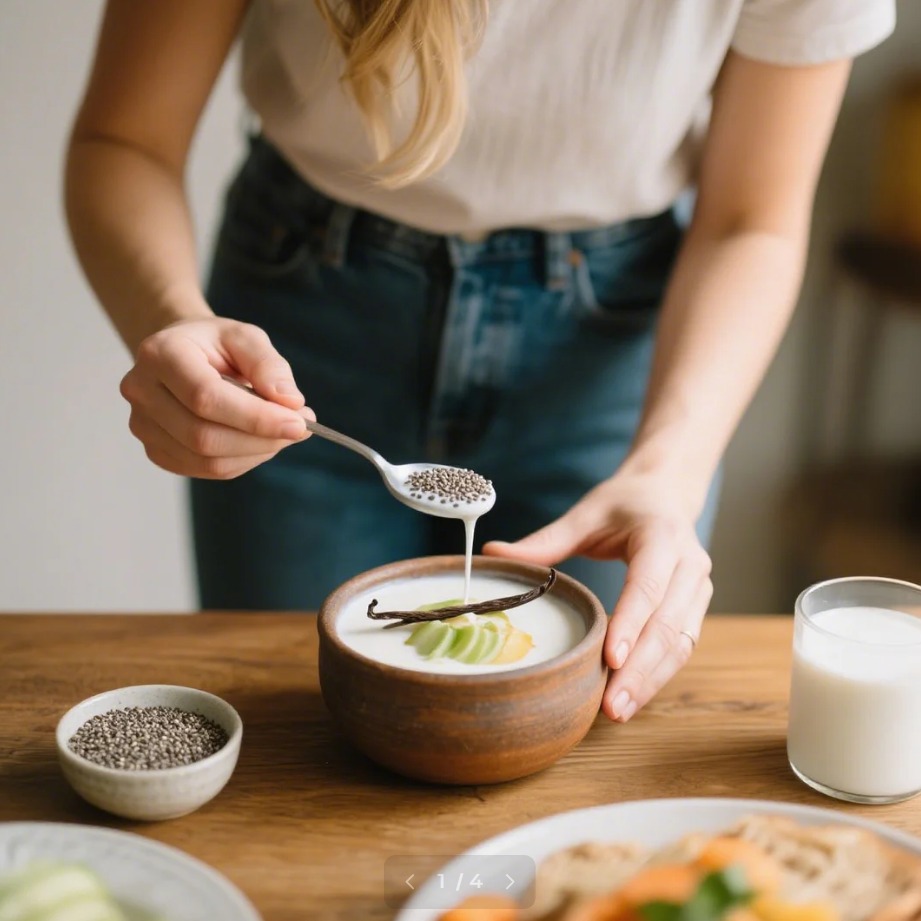O Sugar consumption is a growing concern, but the solution doesn’t have to be radical. Cutting back doesn’t mean eliminating it completely—balance is the smartest way to protect your health and well-being.
Alternative sweeteners, mindful eating habits, and well-adapted recipes make a real difference in everyday life. I’ve learned that small changes can have noticeable impacts, both physically and mentally.
It’s possible to keep flavor and enjoyment in meals without compromising your health. Today, there are practical, natural, and safe options that don’t sacrifice the culinary experience. Cutting sugar is not punishment—it’s self-care. One important point: sugar itself isn’t the villain. The real issue is excess and frequency. When consumed in moderation and combined with whole foods and good practices, it can be part of a healthy routine.
In this article, I share science-based strategies, recipes, and tips to help you reduce your sugar intake without suffering—and with much more awareness.
Why Reducing Sugar is Good for Body and Mind
Cutting back on sugar improves metabolic markers like blood glucose and insulin sensitivity. Recent studies show that reducing added sugars for just a few weeks lowers triglycerides and inflammation. This contributes to greater mental clarity, less fatigue, and more energy throughout the day.
Moreover, excessive sugar intake is linked to weight gain and increased cardiovascular risk. When I started balancing my intake, I noticed fewer mood swings and improved focus. Glycemic regulation is essential for maintaining stable energy levels and high cognitive performance.
Another proven benefit is better gut microbiota health. When I limit ultra-processed foods rich in sugar, I experience reduced inflammation and better digestive regularity. This directly impacts sleep quality and mood—both key elements of emotional balance.
How to Cut Sugar Without Suffering
The first step is to retrain your taste buds by gradually cutting down. Replacing sugary drinks with low-sugar versions or lemon water makes a significant difference. I follow a progressive reduction strategy to naturally adjust my taste to the real flavors of food.
Another effective approach is choosing whole and minimally processed foods. You can satisfy your sweet tooth with fresh fruit, plain yogurt with honey, or dark chocolate with a high cocoa content. These alternatives provide fiber and nutrients without spiking blood sugar.
I also practice mindful eating: eating slowly, savoring each bite, and recognizing satiety. This behavior builds self-control and allows me to reduce sugar without feeling deprived. The pleasure remains, and the balance becomes sustainable.
Tasty and Practical Low-Sugar Recipes
To support those seeking flavor and health, here are some simple recipes using quality ingredients and less sugar:
- Natural smoothies
Blend fruits like banana, papaya, or strawberries with plain yogurt and add chia seeds with a bit of honey or stevia. It’ssweet, nutritious, and lowglycemic. - Homemade snack bars
Mix oats, 70% cocoa powder, natural peanut butter, and chopped dried fruits. Bake for 10–15 minutes. Great for a quicksnack. - Chia pudding with berries
Use 200 ml of plant-based milk, 2 tablespoons of chia seeds, vanilla extract, and chopped strawberries. Refrigerate for 4 hours. - Banana oat cookies
Mash 2 ripe bananas, mix with 1 cup of oats, cinnamon, and optional 70% chocolate chips. Bake for 20 minutes at 180°C (350°F). No added sugar. - Sweet potato brownies
Mix cooked and mashed sweet potato with cocoa powder, eggs, oats, and a natural sweetener. Bakeuntil set. Soft, sweet, and nourishing.
These recipes have rich flavor, pleasant texture, and can be adapted with ingredients you already have at home. I usually prepare them on Sundays to have healthy options ready for the week.
Most importantly, all of them keep the joy of eating sweets, while controlling glycemic impact. The idea isn’t restriction—it’s awareness of sugar’s role in our bodies and emotions.
The Impact of Sugar on Diabetes and How to Lower the Risk
A diagnosis of type 2 diabetes requires attention to sugar intake, but not necessarily a total ban. Reducing sugar directly impacts blood sugar management and may decrease medication needs. Research shows that even moderate reductions improve glycemic control in the short term.
I follow recommendations to prioritize complex carbohydrates and low-glycemic foods. This helps avoid blood sugar spikes and reduces strain on the pancreas. Conscious eating enables better management without having to give up sweets entirely.
Professional monitoring is also essential: regular testing, nutritional guidance, and medication adjustments when needed. A balanced approach allows for occasional sweets without harming health, as long as there is ongoing and mindful control.
Balance: How to Enjoy Sweets Mindfully and Healthily
A balanced diet doesn’t mean eliminating treats—it means making mindful choices and practicing moderation. For me, this means adapting desserts to the occasion and hunger level, always mindful of portions and ingredient quality.
I reserve sweets for special occasions and have them in controlled portions. This helps lower blood sugar impact and preserves emotional satisfaction. I can still enjoy sweets—without guilt or excess.
Finally, combining physical activity, proper hydration, and a balanced diet helps maintain this equilibrium. The body responds better to nutritional changes when supported by a healthy lifestyle.
A Fresh Perspective
Managing sugar consumption with balance and science is both possible and sustainable. You can reduce sugar without suffering, adopt smart substitutions, and stay aware—especially if you’re managing diabetes.
Allow yourself to enjoy in moderation and discover that it’s possible to keep the pleasure without the guilt—always guided by science and a focus on well-being.
